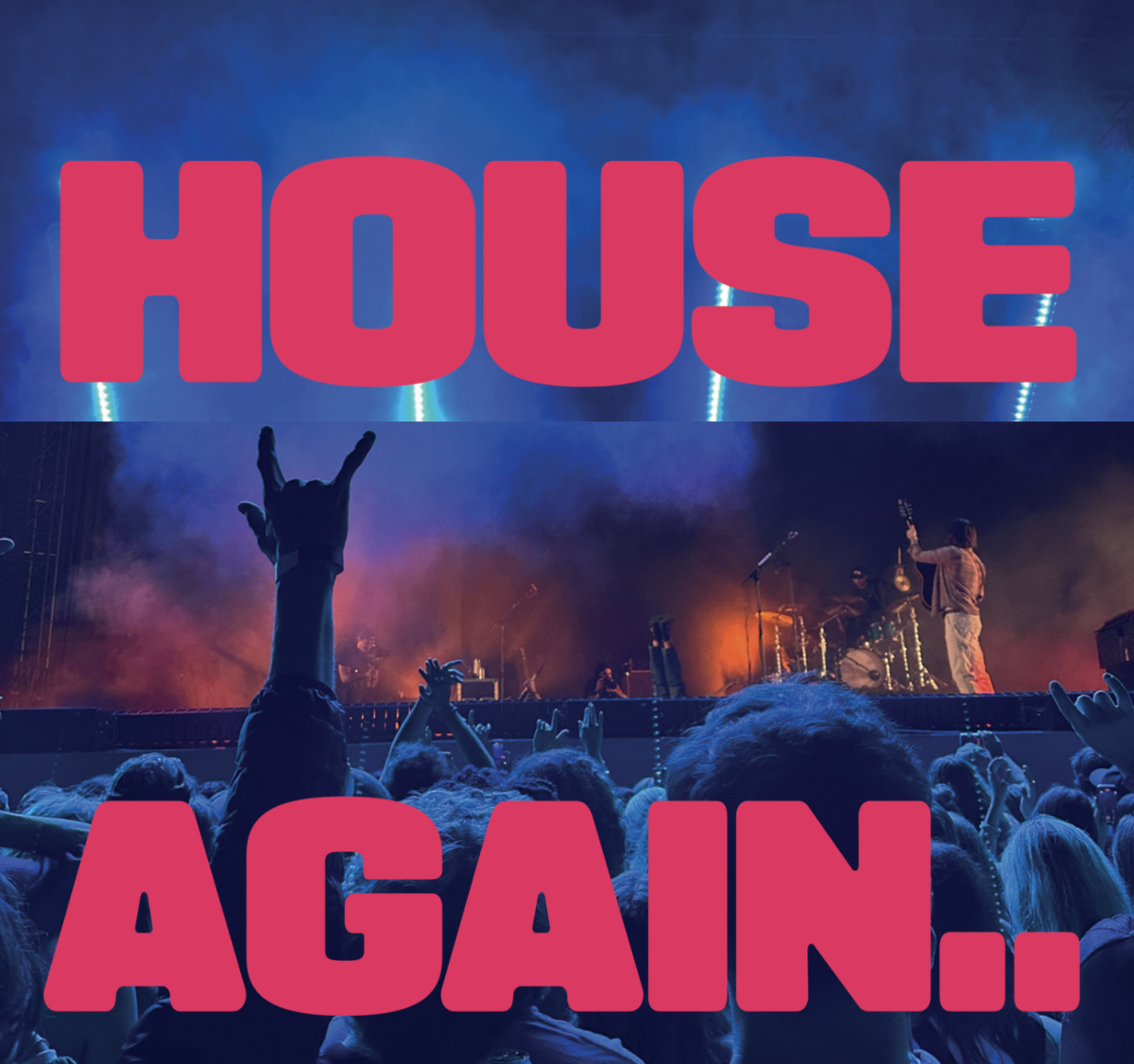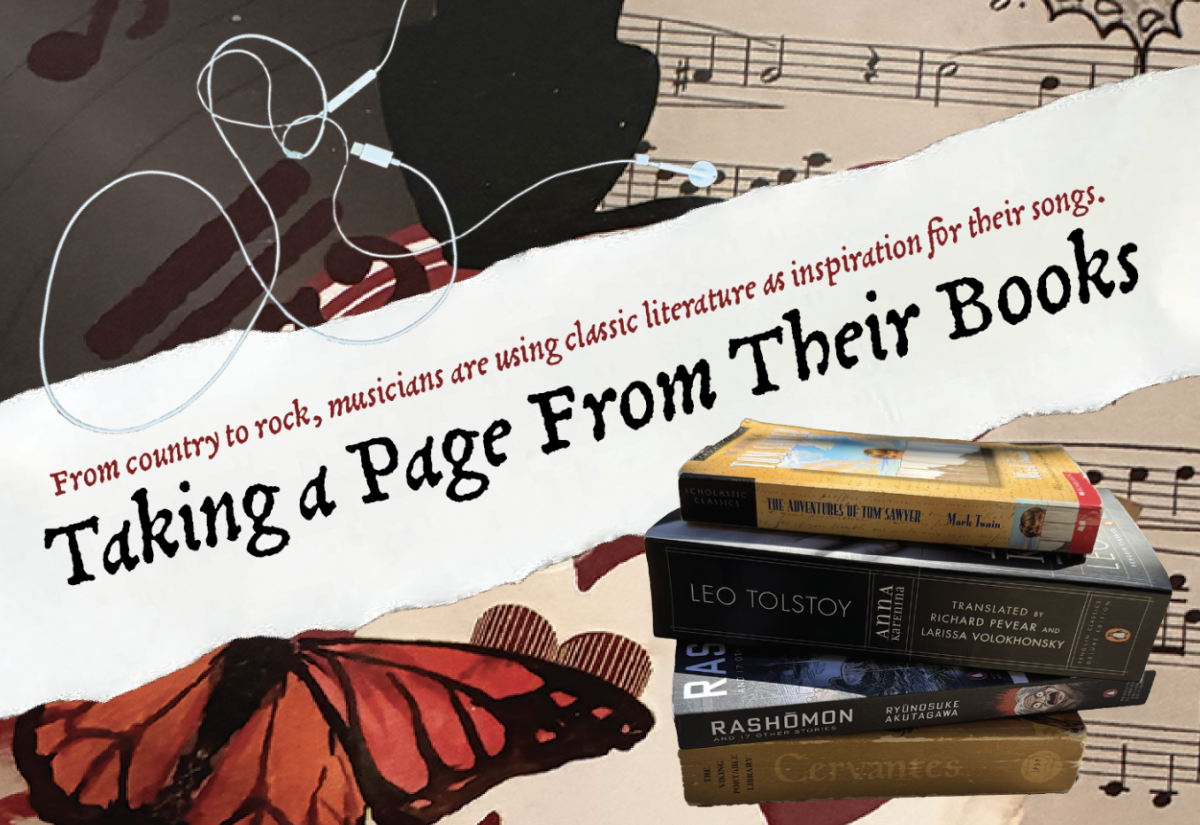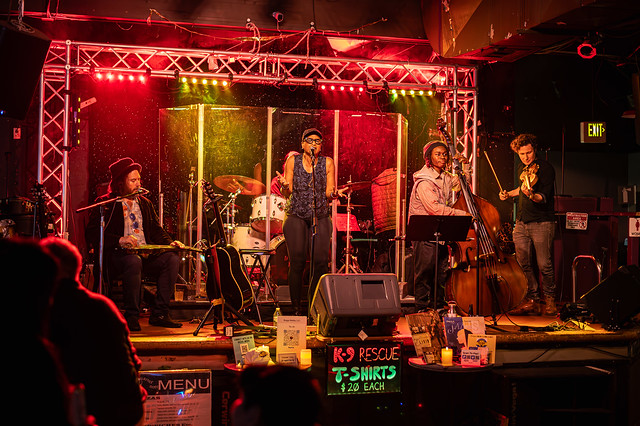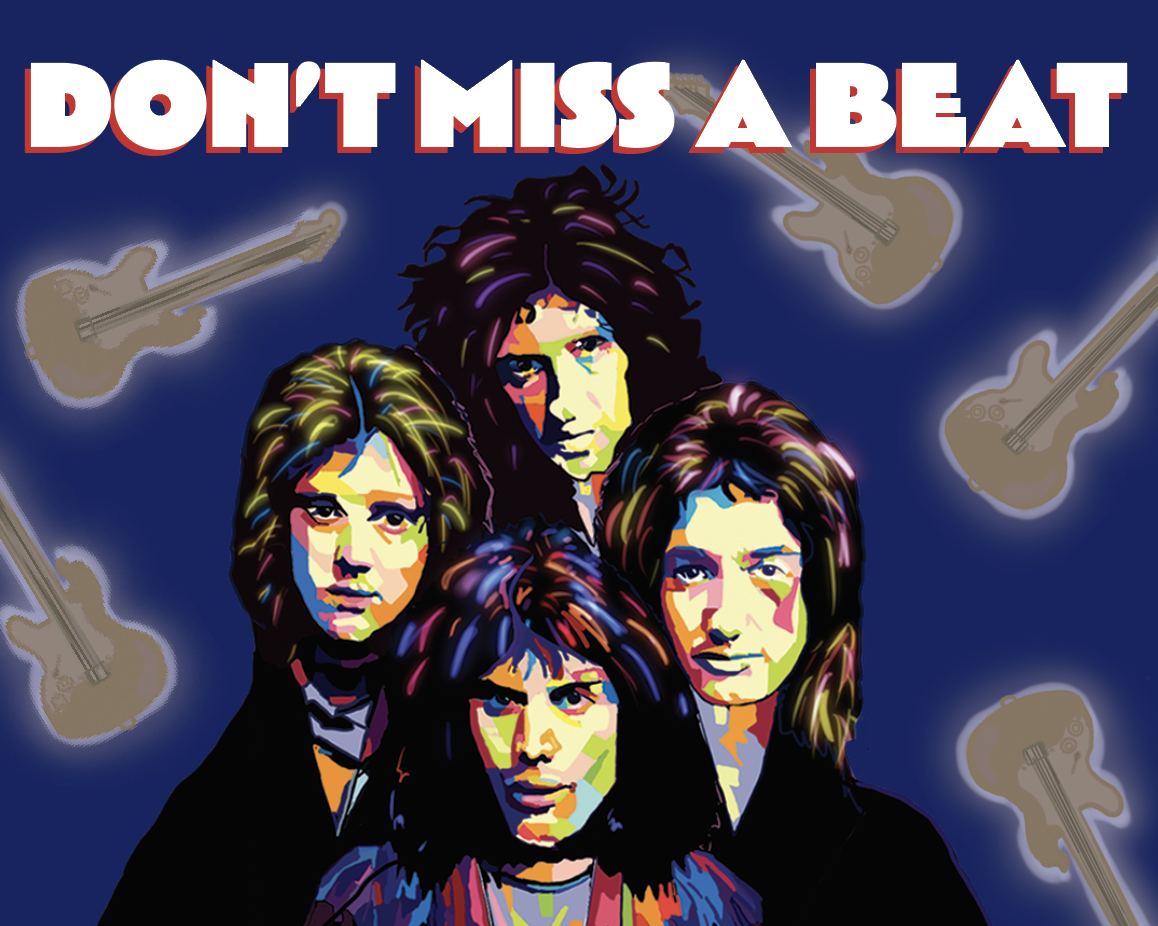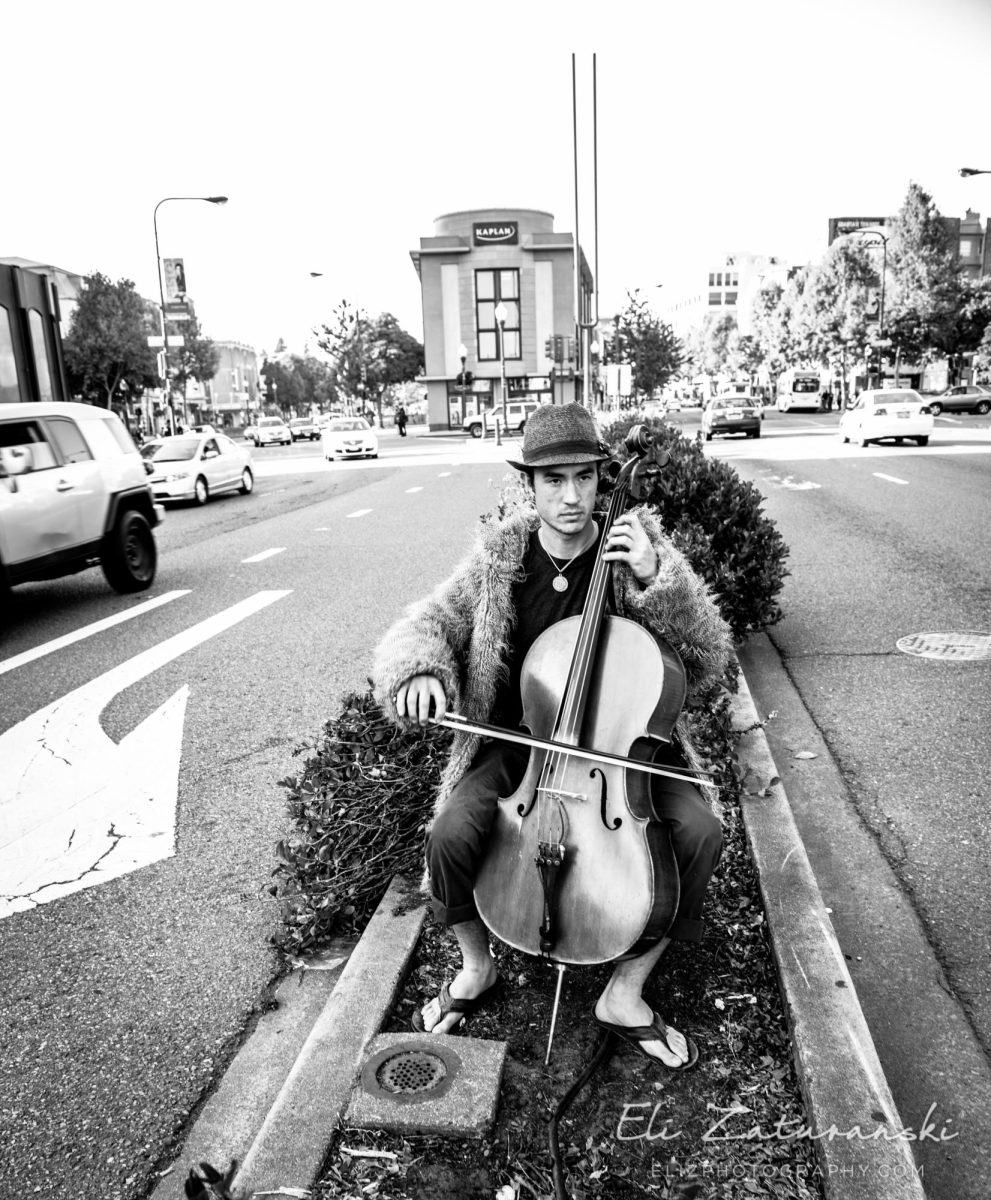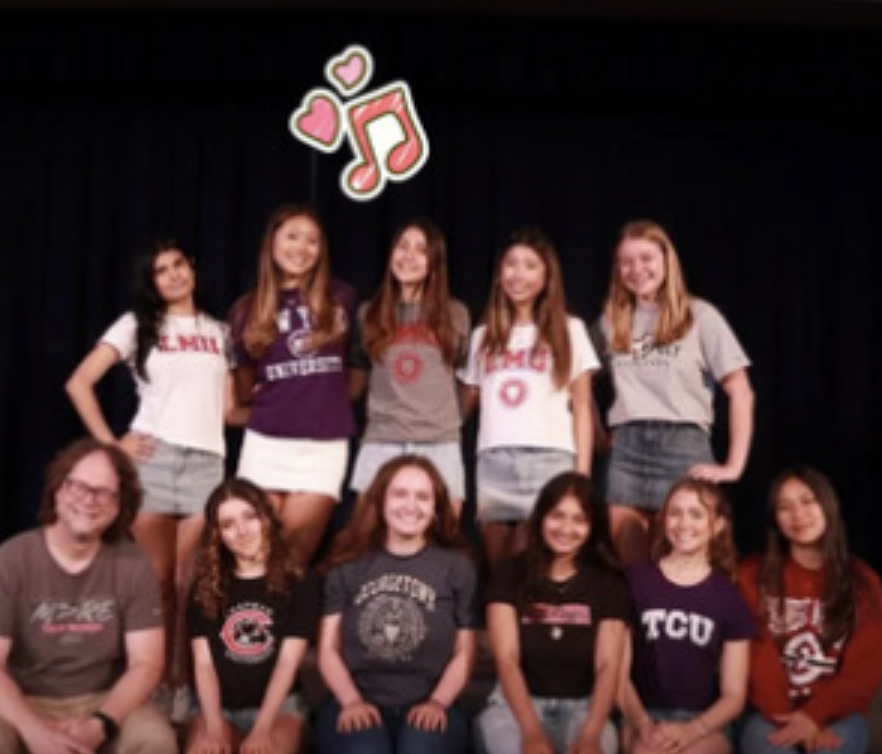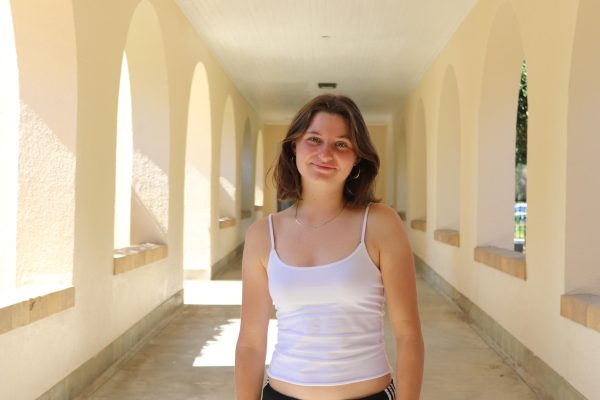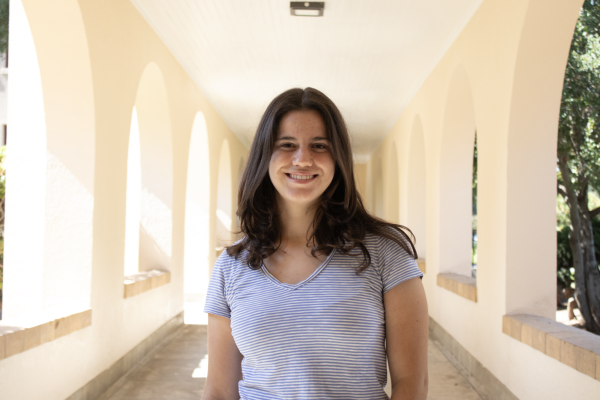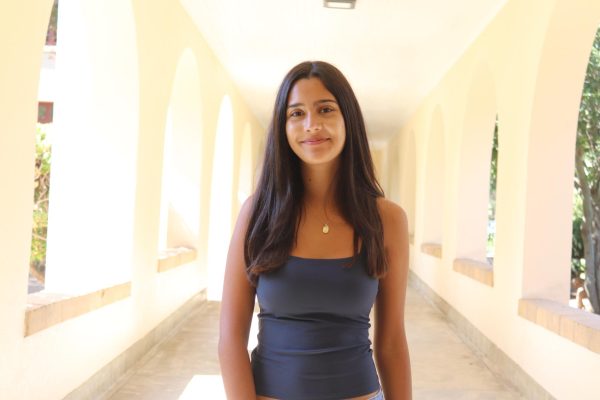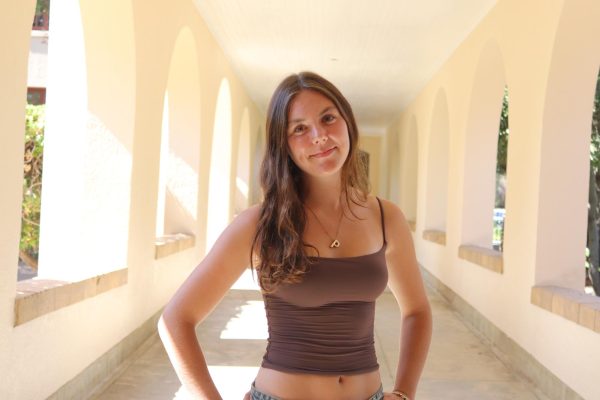The walls are shaking, the speakers are blasting, the subwoofer is bumping and the infectious rhythm of house music fills the air. No, this is not a club — this is a dad in a minivan, driving his kids to school. Paly parent Daniel Uribe has enjoyed house music for decades and has no intention of stopping, no matter what stage of life he may be at.
“Our minivan has factory-installed subwoofers, so [we] can listen to house music very loudly,” Uribe said. “House music is made to make you feel right. It’s the emotion. It’s the feeling of the beats, the sound [and] the atmosphere.”
While house has recently reentered the contemporary party scene, older generations continue to recognize it as the iconic musical backdrop of their younger years — fostering danceability and connection. Dr. Micah Salkind, DJ and director of civic and cultural life at the Rhode Island Foundation, grew interested in the music scene as a teenager.
“I grew up in Lawrence, Kansas,” Salkind said. “Kansas City in the late ‘90s had a rave scene, much like the Bay Area had a rave scene. As a teenager, I was working with college students who were going out to parties, so I started to join them and learn more about the music through the DJs that were playing in my community. And that is what set the stage for me being interested in house as a genre and as a culture.”
This passion led Salkind to write his debut novel, titled Do You Remember House? Chicago’s Queer of Color Undergrounds. In his book, Salkind explores when house music began to take off.
“It is the period between 1978 and 1983 when that formative, creative house music culture and the original recordings started coming out of Chicago,” Salkind said.
Before house became a genre known to the world, its sound was developing in the Chicago party culture, beginning as more of a cultural revolution brimming in the city’s underground clubs.
“It is widely agreed that socially, house music culture, prior to there being a house music genre, emerged in the mid to late ‘70s in Chicago at underage and LGBTQ parties thrown by mostly gay Black men and their friends,” Salkind said.
House was not the first musical phenomenon to come out of Chicago.
“Chicago is the birthplace of blues music,” Salkind said. “By some accounts, it’s the birthplace of certain kinds of jazz music. It’s got a rich Black musical-like lineage that extends long before house music in the ‘70s.”
Many household names are tied to the beginnings of house music as a genre, with some of them being Chicagoans like promoter Robert Williams, DJ Frankie Knuckles and DJ Ron Hardy. Once the Chicago music scene developed, the infectious rhythm of house spread throughout the world.
“When you talk about the spread of house, I would argue that it’s something that Chicagoans bring around with them,” Salkind said. “They brought [cassette tapes] to colleges and universities around the United States. Middle-class, Black Chicagoans in particular, and people doing military service overseas in Germany and the UK, brought it around the world with them as a cultural touchstone that is reminiscent of their home lives.”
House music reached Uribe during his teenage years growing up in Mexico City. Uribe spent countless nights at antros (Mexican nightclubs), where he discovered his love for the genre.
“When I was young, there was a third space,” Uribe said. “They [antros] were like clubs, but for younger people — there was no alcohol, but there was a DJ.”
House music was the backdrop to these spaces, creating an atmosphere in which people were not afraid to dance, let loose and have fun.
“The magic moment is when you are dancing with your friends and the tunes of house [music] begin,” Uribe said.
Although Uribe still creates ways to enjoy house despite no longer frequently going to nightclubs, he occasionally finds himself missing the feeling of dancing at a club with his friends.
“[I’ll] always prefer to listen to it [house music] at a party with the rest of [my] friends,” Uribe said. “It’s a very social thing when you look at each other and say, ‘Oh, this is the song, right? This is the tune. This is it’.”
Now, the torch has been passed to younger generations, as house has recently re-emerged into popular culture for teenagers to experience for themselves. Paly senior Anjini Sanchorawala finds that house is the perfect avenue for dancing and having a good time.
“It [house music] just pumps you up and gets you hyped,” Sanchorawala said. “It feels like your body has to move to it, so it’s good dance music.”
For Sanchorawala, music has always been a big part of her life, and her discovery of house came naturally through her love of other genres.
“My dad’s side of the family is really musically inclined and [listens to] Indian classical music that has a lot of rhythms, beats and movements.” Sanchorawala said. “I’ve been hearing that since I was a baby. I am also in choir, [where] rhythm is so important.”
Sanchorawala is frequently seeking out these beats in the concerts she attends, with Australian music producer Fisher sticking out as one of her favorite performances to date.
“[Fisher] … makes music live, and he also played all of his best songs,” Sanchorawala said. “The crowd was super hype[d], … and everyone was just having a good time.”
As Sanchorawala sees it, one of the best parts of house music is its ability to bring people together, whether that be in a concert setting or when listening to it with friends.
“A lot of my friends are into house too, so we’re able to vibe to it together,” Sanchorawala said. “It’s easy because it’s so much rhythm and bass and is less lyrical. It makes me happy.”
Salkind sees the increasing popularity of house music among young people as a continuation of a pattern.
“House was started by teenagers,” Salkind said. “It makes sense that teenagers and young adults will find it and fall in love with it, especially because it’s the peak point of your life where you’re out socializing, where you want to go dancing, where you want to party with your friends. House being the soundtrack of that life stage is nothing new, and it’s great how that is continuing.”
Liam Graham, a college student at Harvey Mudd who is originally from the Bay Area, is part of the new wave of teenagers who are passionate about house music. Graham curates the soundtrack of his peers’ college experience by DJing at parties — an activity he began his freshman year.
“[My dorm president] said, ‘We’re having a party this Friday. Would you be interested in DJing?’” Graham said. “I was a little scared, because I hadn’t expected to start DJing in front of bigger audiences as soon as I got to college, but I didn’t want to turn the opportunity down. I was like, ‘All right, let’s do it,’ and it went really well. People had a fun time.”
Oftentimes, the DJ’s role is to be a vessel for the music and a factor that elevates the party.
“You have to bring the party to them [the crowd],” Graham said. “It’s almost like an exchange of energy. I can feel the energy of the crowd, and then I try to give that back, and then it’s like a cycle.”
In Graham’s experience, house music has emerged as a unique genre of music that successfully hypes up any crowd.
“House music; as a listener, it’s really danceable,” Graham said. “It has a repeated groove and rhythm.”
House music is felt differently by everyone. For Bay Area native, DJ and music producer Ethan Estrada, house has a deep, easily recognizable style.
“House, to me, is like a heartbeat,” Estrada said. “It perfectly syncs with the body’s natural rhythm when dancing. It’s also pretty easy for people to recognize the rhythm, which is a nice [way] of connecting to others in the dance scene.”
Estrada studies at Bowdoin College, where he continues to explore the world of electronic music through both DJing and finding his own unique sound.
“From my experience, it [DJing] is just messing around until something clicks and the ball starts rolling,” Estrada said. “Otherwise, it’s a constant wave of throwing out projects and trying again from a different angle. It’s more of a spur-of-the-moment kind of thing, which makes the times that it clicks really special.”
Paly junior Juni Thurston has also experimented with creating music for a few years, sparked by her appreciation for the songs she listened to.
“I originally started producing music in seventh grade, because that was when I started listening to more electronic music,” Thurston said. “I remember thinking, a lot of these songs were composed of simple melodies, basslines and rhythms. I thought to myself: ‘How hard could it be to make this type of stuff?’”
Thurston quickly realized that producing electronic music requires more effort than she initially assumed.
“The first couple of songs that I made were so bad,” Thurston said. “But I still put them on SoundCloud, and somehow, people liked them.”
Despite Thurston’s initial doubts, people became intrigued by her distinct style and rhythm as she continued to work with creating her own music.
“I just kept on making stuff, and eventually, what I made got better,” Thurston said.
For Paly graduate Kellyn Scheel, house music has helped her explore her own creativity in an unexpected way. Her brother, Dillon Scheel, first introduced Kellyn to the scene.
“When he [Dillon] was a senior in high school, he started leaning more into music production, which, by default, kind of gets you into the EDM [electronic dance music] realm,” Kellyn Scheel said. “He’s the one who introduced me to it when I was really young, … and then I followed his music taste and developed my own.”
Dillon Scheel continued to dive into music production and now produces house music under the name of Arlo, accumulating over 1 million listeners per month. This love of music began with guitar and led Dillon to attend Berklee College of Music for jazz guitar. When the COVID-19 pandemic forced school closures, Dillon returned to California, bringing his passion for creating music back home with him.
“At this time [2020], I had just started learning how to do graphic design,” Kellyn Scheel said. “He was home, and he was making music, and I was making art. I was messing around a little bit with stop motion animation on my iPad, just in my free time. Me and my brother were hanging out, and he was like, ‘What if I make a song and you make an animation that goes with it?’”
This moment was the catalyst for Kellyn Scheel’s continued involvement in the visual aspect of house music. Beginning her design experience as creative director of C Magazine, Kelly Scheel began experimenting with animation and graphic design in the house industry and now creates concert visuals for major house artists.
“When he [Dillon] started releasing more music, I started making little visuals for his Spotify page,” Kellyn Scheel said. “As he started gaining a following on social media, he was like, ‘I think it’d be really cool if we started using some visuals on my page, because it will help divide up my social media content with some videos of me mixing and some videos of your art.’”
Once Scheel began to make house music visuals, she started watching live music to improve her craft. Consequently, she also started noticing how house and electronic concerts are unique from other concert forms.
“In other concerts, it’s about the performance.” Scheel said. “But with electronic music, you’re not performing, necessarily. You’re mixing on stage, so you don’t have the ability to play guitar or sing. It’s more common for them to just kind of stand there, so they rely a lot on the visual content behind them to immerse the people in the crowd in music.”
Eventually, Scheel’s visuals reached the attention of it’s murph, a wildly popular DJ and producer.
“He [it’s murph] messaged Dillon and said ‘Hey, who does your visuals? I’m looking for someone to do a set for my show,’” Scheel said.
Scheel began to reach out to more artists, building her website and even making the visuals for its murph’s recent tour. The way she sees it, house music is about much more than just the sound.
“It’s about the experience of the music, rather than the songs themselves,” Scheel said. “It’s about that live performance and experiencing it with other people and feeling the music, and that is my favorite part. You’re not supposed to dig too deep into it or look for some sort of deeper emotion. You’re just supposed to be in and share that experience with other people.”
As the popularity of house music continues to grow, modern teenagers continue to experience it in the way their parents did: an outlet for genuine connection and positive energy. And whether or not they are conscious of its origins in the moment that they engage with it, house music seems to have an undeniable effect on all who choose to listen.
“What I hope for those young people that are discovering house music is that they figure out what it means to them, and then learn more about where it comes from and and why the people who created it did,” Salkind said.
However, Salkind recognizes that modern teenagers should not be afraid to experience house music for themselves and make it their own.
“I hope that people aren’t trapped by this [fear] of freezing any cultural expression in a time and place and not allowing it to breathe and grow and change,” Salkind said. “I hope young people take house and they run with it and do something amazing.”



